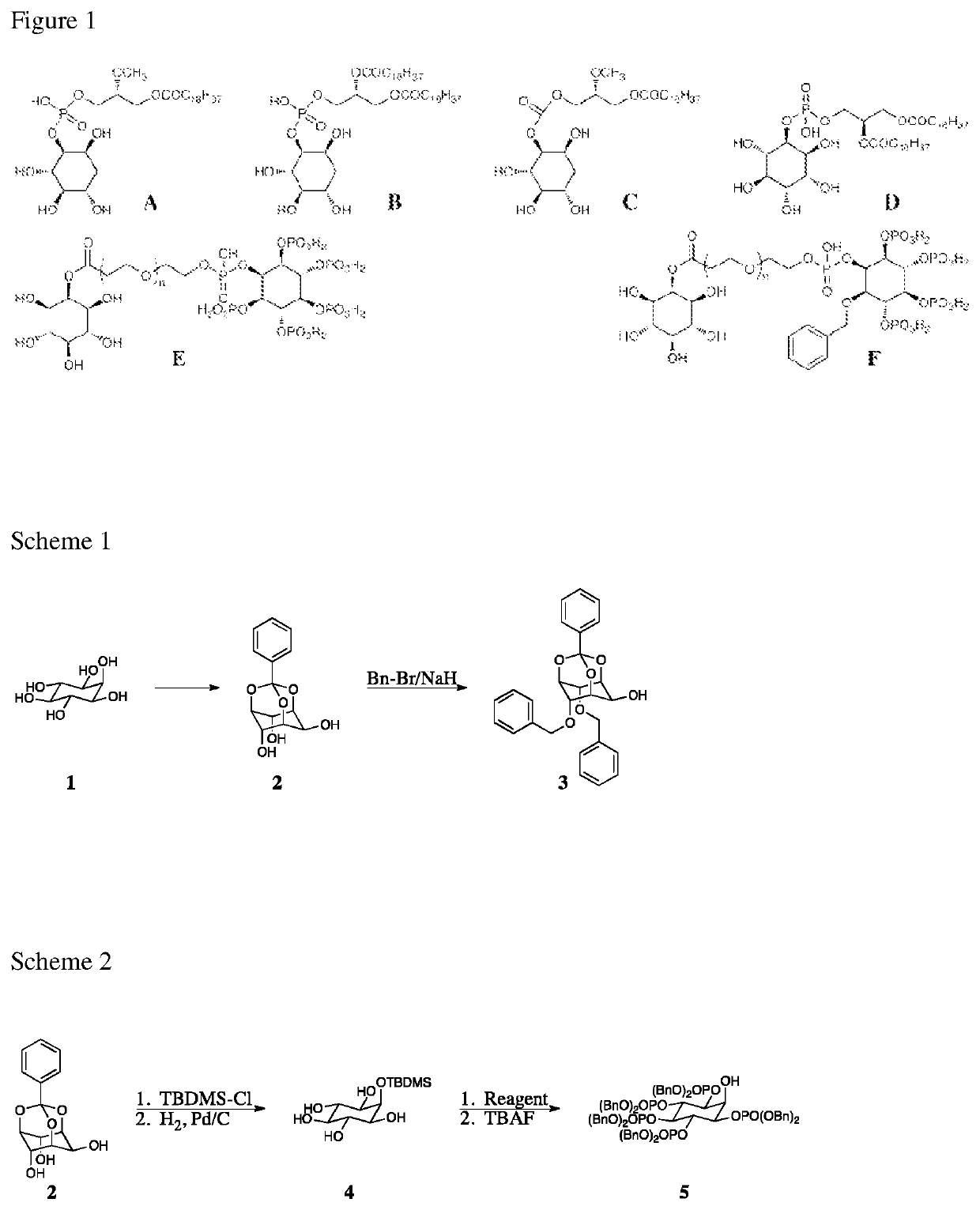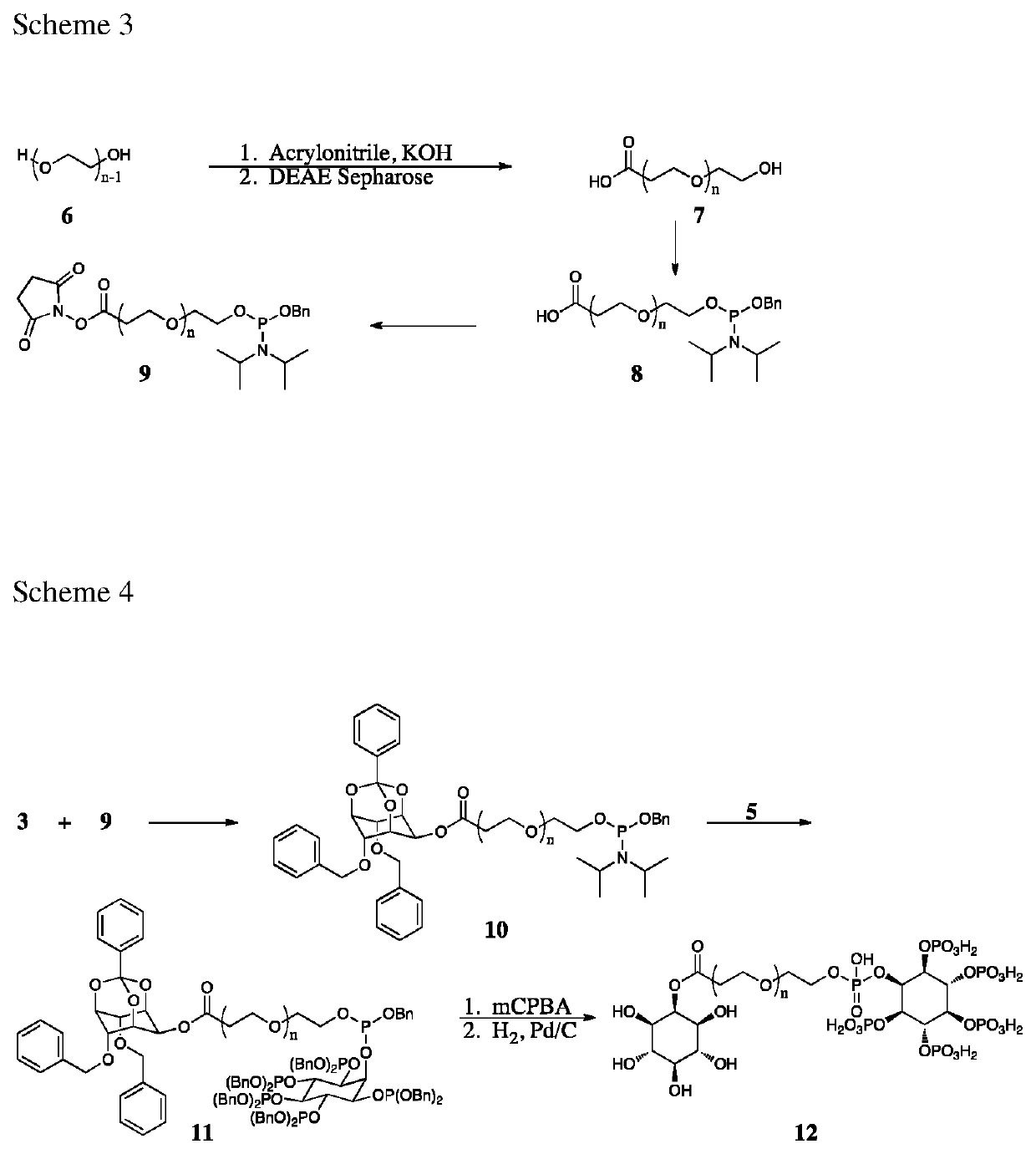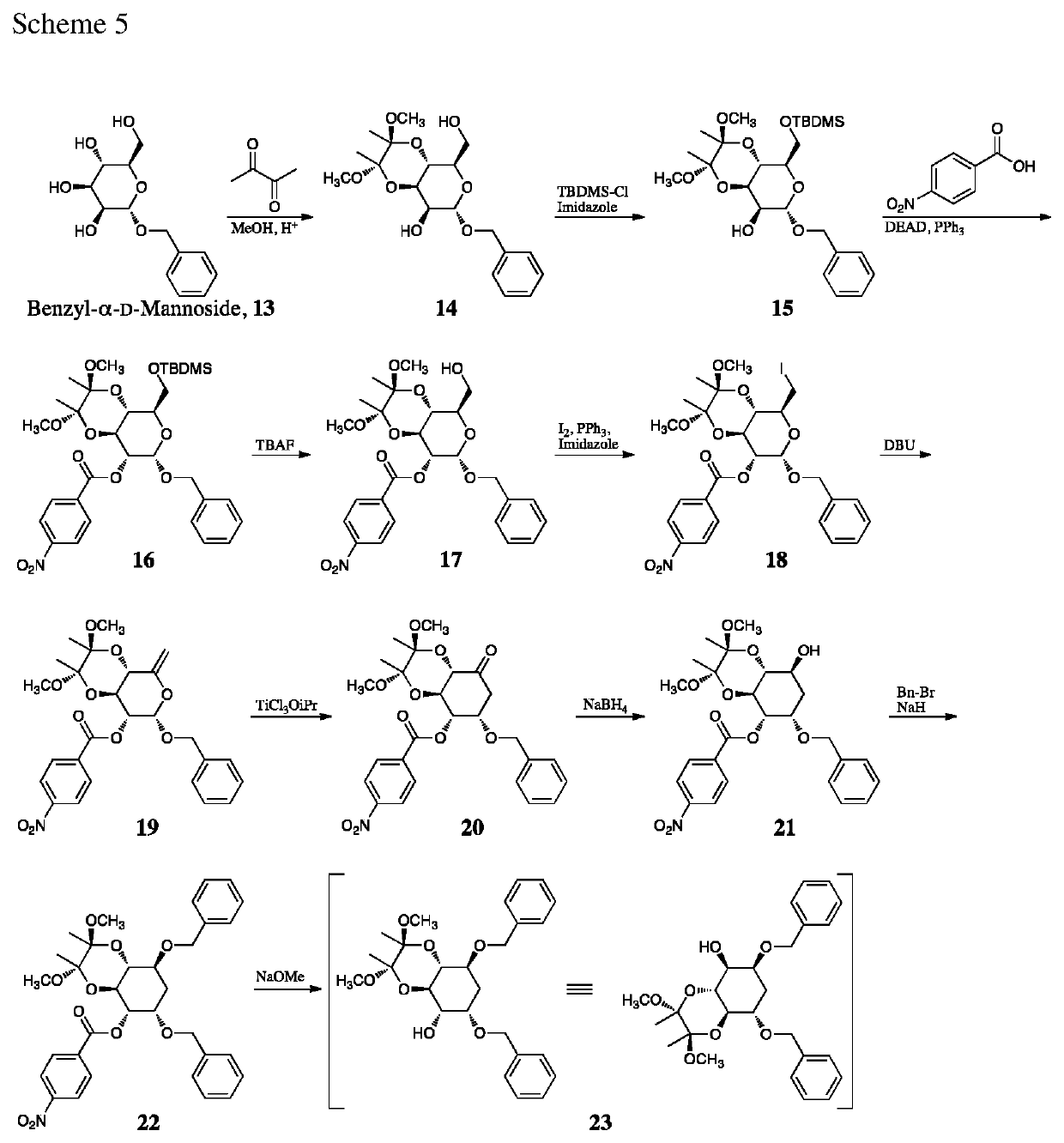Compounds, derivatives, and analogs for cancer
a derivative and analog technology, applied in the field of compounds, derivatives, analogs for cancer, can solve the problems of no therapeutic solution for kras mutation development and undesirable effects
- Summary
- Abstract
- Description
- Claims
- Application Information
AI Technical Summary
Benefits of technology
Problems solved by technology
Method used
Image
Examples
example 1
of Compound E (Group 2)
[0286]Myo-inositol and its phosphate isomers are known compounds as are the corresponding deoxy analogs thereof. Described herein is the synthesis of compound E above (a Group 2 compound). The remaining Group 2 compounds are prepared analogously to the synthesis for Compound E using the appropriate inositol isomers or deoxy inositol isomers as needed.
[0287]As illustrated in Scheme 1, preparation of compound E begins with commercially available myoinositol. Specifically, compound 1 is reacted with an orthoester providing compound 2 [Billington, 1989; Praveen 2001]. Conversion of compound 2 to compound 3 proceeds via reaction with sodium hydride and benzyl bromide [Billington, 1989].
[0288]As illustrated in Scheme 2, compound 2 (Scheme 1) reacts with tert-butyl dimethylsilyl chloride (TBDMS-Cl) [Lee, 2006] selectively protecting the single equatorial hydroxyl group. Subsequent cleavage of the orthobenzoate proceeds via catalytic hydrogenation yielding compound 4....
example 2
of the 3-Deoxy Inositol Precursor to Compounds A, B and C (Group 1)
[0292]Compounds A, B and C are synthesized via Schemes 5-8. All three proceed through a common intermediated (compound 23) described in Scheme 5.
[0293]As illustrated in Scheme 5, commercially available benzyl-α-D-mannoside, compound 13, reacts with 2,3-butanedione to simultaneously protect the 3- and 4-hydroxyl groups [Ley 2001]. The 6-hydroxyl group is then protected as a silyl ether leaving the 2-hydroxyl group free for subsequent Mitsunobu inversion with 4-nitrobenzoic acid. Cleavage of the silyl group from the 6-hydroxyl group yields compound 17.
[0294]Conversion of the sugar structure to the required 3-deoxyinositol continues by conversion of the 6-hydroxyl group of compound 17 to an iodide (compound 18). Elimination on treatment with DBU yield the enol ether compound 19. Finally, treatment with a Lewis acid generates the inositol compound 20 [Das 1997; Sollogoub 1998]. Reduction of the carbonyl generating compou...
example 3
of the Lipid Components of Compounds A and B (Group 1)
[0296]As illustrated in Scheme 6, commercially available compound 24 is protected as its corresponding benzyl ether on treatment with benzyl bromide and sodium hydride. The acetonide of compound 25 is cleaved under acidic conditions yielding the desired compound 26. Depending upon the number of equivalents of nonadecanoyl chloride used, selective acylation of compound 26 is achieved at either the primary hydroxyl group (compound 28) or at both hydroxyl groups (compound 27). In the case of compound 28, reaction with methyl iodide and silver oxide yields the methyl ether, compound 29. From this point, the benzyl ether of compound 27 or compound 29 is cleaved by catalytic hydrogenation yielding compound 30 or compound 31. Finally, reaction of compound 30 or compound 31 with phosphorodiamidous acid N,N,N′,N′-tetrakis(1-methylethyl)-, phenylmethyl ester [Anderson 2010] generates the required phosphate precursor compound 32 or compound...
PUM
| Property | Measurement | Unit |
|---|---|---|
| particle size | aaaaa | aaaaa |
| structure | aaaaa | aaaaa |
| core structure | aaaaa | aaaaa |
Abstract
Description
Claims
Application Information
 Login to View More
Login to View More - R&D
- Intellectual Property
- Life Sciences
- Materials
- Tech Scout
- Unparalleled Data Quality
- Higher Quality Content
- 60% Fewer Hallucinations
Browse by: Latest US Patents, China's latest patents, Technical Efficacy Thesaurus, Application Domain, Technology Topic, Popular Technical Reports.
© 2025 PatSnap. All rights reserved.Legal|Privacy policy|Modern Slavery Act Transparency Statement|Sitemap|About US| Contact US: help@patsnap.com



